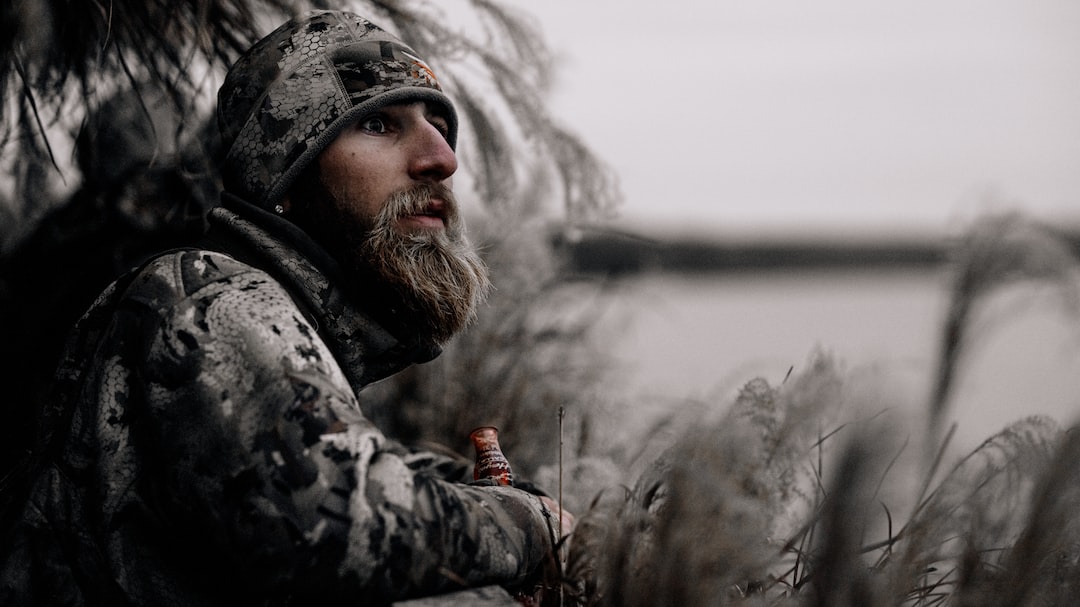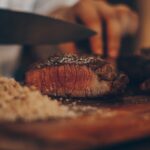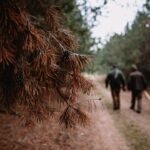A hunting trip isn’t complete without a properly stocked first-aid kit; it’s just as essential as your knife. In this post, we’ll investigate the importance of first aid kits for hunting and how obtaining certifications tailored to outdoor scenarios can help you respond effectively in emergency situations.
We will explore the importance of obtaining first aid and CPR certifications specifically tailored to outdoor scenarios. Realizing the significance of being able to act expeditiously in crises can be life-saving.
In addition, we’ll detail must-have items for every hunter’s med kit – from basic items like gauze pads and duct tape to specialized tools such as SOF-Tactical Tourniquets. Further on, we will provide an overview of advanced tools recommended by experts with detailed explanations on their usage.
For those embarking on overnight hunts or extended trips, preparation is key. We’ll share a list of necessary gear essentials along with tips on building your own one-person survival kit.
This comprehensive guide aims to equip you with knowledge and confidence when venturing out into nature armed not only with your trusty rifle but also a robust first aid kit for hunting.
The Importance of First Aid Training for Hunters
Hunting may be exciting, but it can also bring risks. From animal attacks to accidental shootings, hunters face various hazards that require immediate medical attention. That’s why first aid training is crucial for any serious hunter.
Why You Need First Aid and CPR Certification for Hunting
First aid and CPR certification equips you with the skills to handle emergencies confidently until professional help arrives. You’ll learn how to treat wounds, manage fractures, perform CPR, and more – skills that could potentially save your life or someone else’s during a hunt.
Some hunters choose to take specialized Wilderness First Aid (WFA) or Wilderness First Responder (WFR) courses. These programs focus on treating injuries in remote locations where immediate professional help might not be accessible.
The Importance of Wilderness-Specific First Aid Training
Wilderness-specific first aid training takes into account unique challenges faced by outdoorsmen like extreme weather conditions, limited resources, and prolonged patient care due to delayed rescue operations. It’s an invaluable asset for any serious hunter.
Remember, having the right gear is essential when heading out on a hunt, but possessing vital lifesaving skills learned through proper medical training is just as important. Always have your hunter’s med kit and remember: the ultimate goal for every hunter is to return home safely at the end of the day.
Essential Items for a Hunter’s First-Aid Kit
Hunting is an adventure sport that requires preparation for any situation, including medical emergencies. No matter the hunt, a hunter’s first-aid kit should always contain certain items.
Must-have items in every hunter’s med kit
- Gauze rolls: Use to control bleeding from wounds by applying pressure.
- Tape: Necessary for securing bandages or dressings over wounds.
- Pressure Bandages: Designed to apply pressure to a wound and stop bleeding quickly.
- Allergy Medications: If you’re prone to allergies or have had reactions before, carry antihistamines with you while hunting.
Consider adding other essentials like tweezers for removing splinters or ticks, scissors for cutting gauze or clothing, pain relievers such as ibuprofen, hand sanitizer, gloves, and even a digital thermometer. Having the correct gear can be a matter of life and death in certain cases.
Specialized tools recommended by experts
Apart from basic supplies, some hunters also include specialized equipment like the SOF-Tactical Tourniquet. This tool is specifically designed for controlling severe blood loss caused by traumatic injuries that might occur during hunting accidents. It works by compressing blood vessels, thereby preventing excessive blood loss until professional help arrives.
The key here is customization – tailoring your first aid kit according to your personal needs and potential risks associated with specific types of hunts you engage in most frequently. Always remember – safety comes first when enjoying this thrilling outdoor activity. So gear up wisely.
Advanced Tools Recommended for Hunting Med Kits
Hunting is a thrilling activity that brings you closer to nature. However, it can also be unpredictable and potentially dangerous, which makes carrying a well-equipped med kit essential for every hunter. While basic first aid supplies like bandages and antiseptics are crucial, there are certain advanced tools that could prove lifesaving during a hunt.
Detailed Explanation on How Each Tool Is Utilized Effectively
- Chest Seals: These specialized dressings are used to treat puncture wounds in the lung cavity caused by sticks or bullets. They create an airtight seal around the wound preventing air from entering the chest cavity while allowing trapped air to escape. Learn more about Chest Seals here.
- Robertazzi Nasopharyngeal Airways: This device is inserted into the nostril to secure open airways in unconscious patients or those with severe facial injuries. It’s designed not to stimulate gag reflex making it ideal for field use. Read more about Robertazzi Nasopharyngeal Airways here.
- Quick Clot Dressings: These hemostatic agents speed up the clotting process, reducing blood loss from severe bleeding wounds. The dressing contains kaolin, an ingredient known for promoting quick blood clotting. Find out how Quick Clot Dressings work here.
- Mini Compression Bandages: Useful for covering wounds or creating pressure dressings, these compact bandages apply steady pressure, helping control bleeding until professional medical help arrives. Discover more about Mini Compression Bandages here.
When hunting, having the right knowledge and equipment on hand can be critical in ensuring safety, especially when medical help may not be readily available; Mini Compression Bandages are an essential tool for any hunting med kit. Remember: Safety should always come first when hunting; this includes being prepared with the right knowledge and gear, including advanced tools recommended for hunting med kits.
The article discusses the importance of carrying a well-equipped med kit while hunting and highlights advanced tools that could prove lifesaving during a hunt, such as chest seals for puncture wounds in the lung cavity, Robertazzi Nasopharyngeal Airways to secure open airways, Quick Clot Dressings to reduce blood loss from severe bleeding wounds, and Mini Compression Bandages for controlling bleeding until professional medical help arrives. The article emphasizes the significance of knowing how and when to use these tools effectively in wilderness settings where immediate professional medical assistance may not be readily available.
Preparing for Overnight Hunts
Planning an extended hunting trip that requires spending the night in the wilderness? Pack additional survival items beyond your well-stocked first-aid kit and basic hunting gear. The goal is not just about surviving but also ensuring comfort during your outdoor adventure.
Necessary Overnight Gear Essentials
- Sleeping Bag: Choose a lightweight, compact sleeping bag suitable for the weather conditions you’ll be facing. This will provide warmth and protection from elements while you sleep.
- Tarpaulin Sheeting (Tarp): A small tarp can serve multiple purposes – from creating a makeshift shelter to collecting rainwater or covering your equipment.
- Cooking Stove & Fuel: A portable stove like the SOTO Amicus backpacking stove, paired with adequate fuel supply, allows you to heat water or cook food on-the-go. Remember to carry matches or a lighter as backup too.
- Soup Mix/Broth: Lightweight and easy-to-cook meals are crucial when car camping isn’t an option. Soup mixes or broths are excellent choices because they’re light, nutritious, and easy to prepare even under challenging conditions.
- Personal Locator Beacon (PLB): In case of emergencies where cell service may be unreliable, having a PLB could mean the difference between life and death by signaling rescuers of your exact location.
Don’t forget to pack other useful items such as duct tape for quick fixes, nitrile gloves for hygiene purposes, athletic tape to prevent blisters, compressed gauze pads for wound dressing, and triangle bandages which can double up as slings in case of fractures. Customize your kit based on personal needs and past experiences.
Remember: It’s better to be over-prepared than underprepared, especially when venturing into remote areas away from immediate help.
Aside from physical preparation, mental readiness plays an equally important role in any successful hunting trip. Pay attention to that little voice inside your head – it often means needing less emergency equipment, so always trust your instincts.
Lastly, don’t forget the key element in every hunter’s arsenal – common sense. Use knowledge gained through previous hunts coupled with good judgement calls to ensure a safe return home at the end of the day, regardless of how adventurous the journey gets.
When preparing for overnight hunting trips, it’s important to pack additional survival items beyond a well-stocked first-aid kit and basic hunting gear. Essential items include a lightweight sleeping bag, tarpaulin sheeting, cooking stove and fuel, soup mix/broth, personal locator beacon (PLB), duct tape, nitrile gloves, athletic tape, compressed gauze pads and triangle bandages. Mental readiness is also crucial in any successful hunting trip along with common sense when making judgement calls to ensure a safe return home at the end of the day.
Building Your Own One-Person Survival Kit
As a savvy outdoors person, you know that hunting can be unpredictable. That’s why we’ve tested 11 different kits to put together an ideal one-person survival kit tailored specifically for hunters.
The foundation of our recommended kit includes basic items like a lightweight and versatile SAM Splint for immobilizing fractures or sprains. We also suggest packing a SOTO Amicus backpacking stove for heating up food or water when out in the wilderness.
A standout item from our tests was the Adventure Medical Trauma Pak. It quickly became our favorite due to its comprehensive coverage of unique challenges faced by hunters. The pak includes essential items such as QuikClot gauze, trauma pads, sterile gloves, duct tape, and more – all packed into a waterproof resealable pouch.
- SAM Splint: Lightweight and flexible splint that can be used on various body parts.
- SOTO Amicus Backpacking Stove: Compact yet powerful stove ideal for outdoor cooking needs.
- Adventure Medical Trauma Pak: Comprehensive medical kit designed with hunting injuries in mind.
Don’t forget to consider your personal needs based on past experiences or potential risks associated with your hunting location. If you are prone to allergies, consider packing medication such as antihistamines or epinephrine auto-injectors (EpiPens) in your Trauma Pak for added safety.
If you have medical training, buying supplies in bulk could prove cost-effective while allowing customization according to individual preferences and requirements.
Remember, no matter how well-equipped your first aid kit is, common sense remains paramount. Pay attention to that little voice inside your head; it often means needing less emergency equipment, ultimately ensuring every hunter returns home safely at the end of the day.
FAQs in Relation to First Aid Kits for Hunting
What to Include in a Hunting First Aid Kit
A hunting first aid kit should contain essentials like bandages, antiseptic wipes, tweezers, medical tape, pain relievers, and specific tools like the SOF-Tactical Tourniquet.
The Importance of Having a First Aid Kit
A first aid kit provides immediate treatment for injuries or illnesses during an emergency situation until professional help arrives, potentially saving lives.
What Should Be in a First Aid Kit According to OSHA?
OSHA recommends including gauze pads, adhesive bandages, tweezers, gloves, and other items depending on workplace conditions.
Important Parts of a Basic Survival Kit for Hunters
A basic survival kit for hunters should include water purification tablets, fire starters, emergency shelter, signaling devices, and food rations.
Avoid These Hunting Activities
- Avoid any form of illegal hunting activities.
- Do not use first aid as a substitute for professional medical care.
- Do not encourage risky or dangerous behavior while hunting.
- Red Cross: Anatomy of a First Aid Kit
- OSHA: First Aid Kits
- Hunter Ed: Survival Kit
Conclusion
As a savvy hunter, you know that a well-stocked first aid kit is a must-have for any wilderness excursion.
Don’t skimp on the essentials – bandages, antiseptics, and specialized tools like the SOF-Tactical Tourniquet should be in your med kit.
For extended trips, consider adding advanced tools like hemostatic agents and chest seals to your kit, and don’t forget overnight gear essentials.
Being certified in first aid and CPR can give you the confidence to handle any emergency situation that may arise while hunting.
Remember, a comprehensive first aid kit could be the difference between life and death in the great outdoors.



